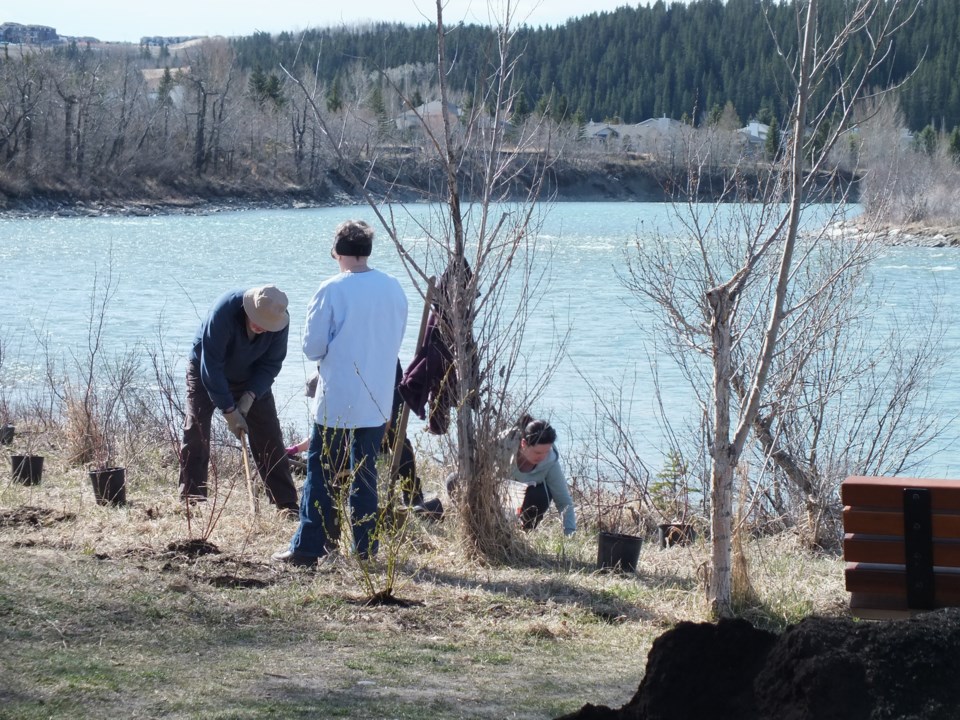In a week when the provincial government announced the staffing of fire crews two weeks earlier than usual because of unusually warm and dry conditions, and the Crowsnest River in southern Alberta (an essential source for the South Saskatchewan River system) has run dry, a group of water policy experts, advisors and researchers gathered in Cochrane to start preparing for what some are saying may be the most serious drought in recent Alberta memory.
The brainstorming session on Friday was sponsored by the Bow River Basin Council (BRBC), a collaborative, multi-stakeholder, charitable organization that promotes balanced solutions for a healthy watershed.
The first speaker at the day-long drought conference set the stage for the day when he warned of a serious drought this spring/summer.
“I hope I’m wrong but I don’t think I am,” said Darren Bourget from Alberta Environment and Protected Areas (AEPA).
Collaboration was a theme raised on more than one occasion during the discussions.
As an example, AEPA has hired one of the conference participants, water management consultants WaterSMART to lead drought modelling and facilitate development of collaborative water sharing agreements.
Water sharing agreements may mean that everyone takes less water so that more can have some.
By the end of March the province wants to finalize draft water sharing agreements and launch a public information campaign.
If required, (if the creeks and rivers haven’t risen and it hasn’t rained enough) the next step could be a declaration of emergency under Section 107 of the Alberta Water Act. This may be needed anytime during summer/fall.
Event organizer and facilitator Judy Stewart is the BRBC’s legislation and policy committee chair. She warmed up the crowd to the idea that droughts were serious business when she alluded to how a previous water shortage had affected her family personally.
“I tell you, we were melting snow,” she said.
If an emergency is declared people will be encouraged to change the way they normally think, she said, and they’ll be asked to reconsider how often they need to wash their cars or driveways, can they take a five-minute shower, etc.
George Roman from the City of Calgary said hotter, drier summers, and shorter, warmer winters could add up to trouble, especially when they coincide with low to very low snowpacks in the Bow and Elbow watersheds – like we have right now.
Drought policy suggestions for local governments
Breakout groups tasked with coming up with advice that may be useful for provincial and local government officials during a state of emergency saw some common themes arise. Just a few were:
The need for clear, comprehensive communications; how to ensure industry has access to water; how to prevent hoarding; dealing with the risk of chaos; how to convince people to change ingrained behaviour quickly; what enforcement might look like (will there be a need for new bylaw enforcement mechanisms); how will First Nations needs be accounted for; how to build trust and accountability with decision makers; how to ensure all stakeholders are engaged at all levels; ensuring fairness across license agreements to evoke concern for downstream users; what is the role for local leadership; how to get the province to enable more independent science in decision-making processes; how to involve more grassroots groups, and, more water reuse education.
In the concluding section of the conference, presenters went to the front of the room to field questions from the crowd. Their eyebrows went up after one questioner asked what jurisdictional challenge might be presented if the province declared a state of water emergency, and then had to later declare a fire emergency as well – who would get priority access to scarce water supplies?
There were two representatives from the MD of Foothills and one from the Town of Beiseker taking part in discussions, along with people from the City of Calgary, the provincial government, and various other interest groups like WaterSMART, Trout Unlimited, and the Alberta Irrigation Districts Association.
River runs dry
The Crowsnest River ran dry last week, upstream of the village of Cowley. It’s the latest red flag highlighting ongoing drought conditions in the region. The Municipal District of Pincher Creek had to dig a pit in the river bottom to take subsurface water by truck and emergency pipes, because they are unable to extract water from the intake pipe.
The source of the Crowsnest is in the Rockies. It meanders through southwestern Alberta until it feeds into the Oldman River near Lundbreck, about 100 kilometres west of Lethbridge. The Oldman eventually merges with the Bow River east of Calgary to form the South Saskatchewan River.
Meanwhile the Alberta government is currently in Stage Four out of five in its water shortage management response plan, and there are currently 51 water shortage advisories across the province. In preparation for a drought this year, the province has started talks on water-sharing between large users.



